I was experimenting really and ended up using a banaton in a reversal of the way its normally used. The banaton is normally used for the final rise to give the bread distinctive ridges. Here, I used it for the first rise, then turned it out and let the dough spread and 'split' before cooking. Its a wet dough and I used what I call the throwing and slapping technique for kneading. Its great fun! You need a dough scraper to use this technique.

Ingredients
150g buckwheat flour
100g light spelt flour
250g strong white bread flour
1 tsp black treacle dissolved in 325 ml of warm water
9 g salt
7g instant yeast (use as per packet instructions)
Method
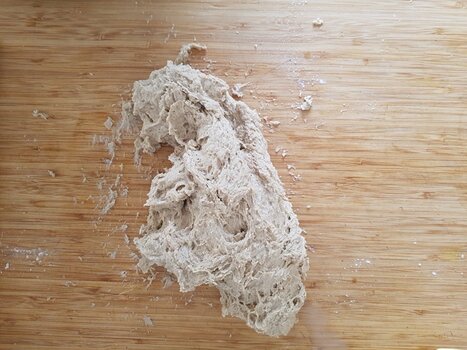
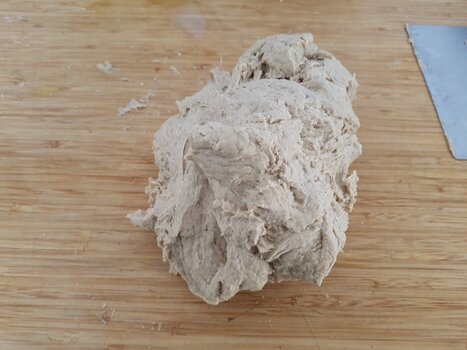
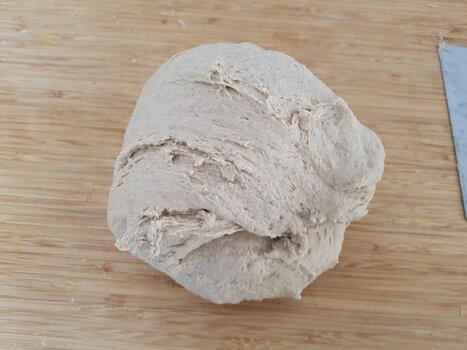
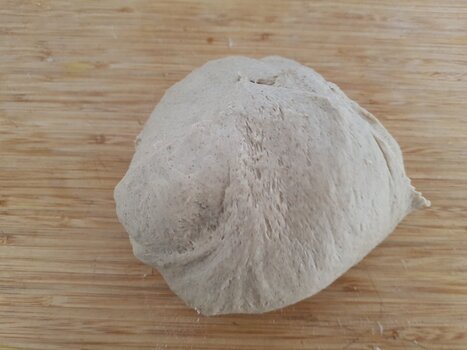
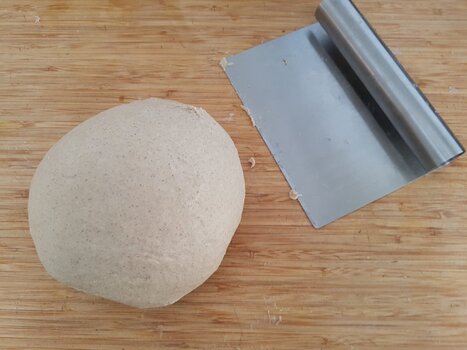
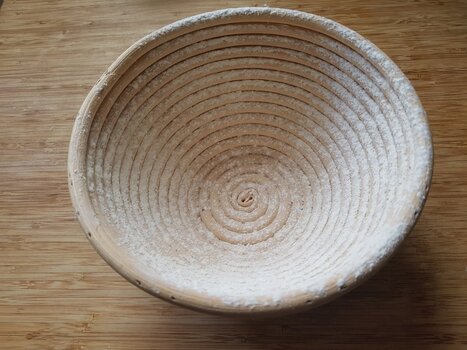
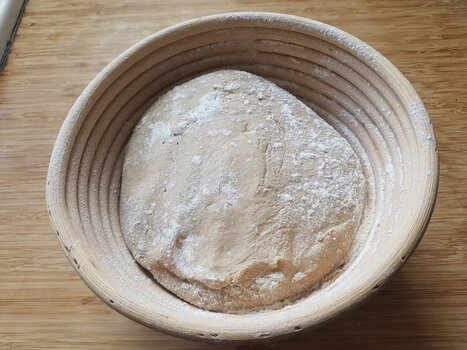
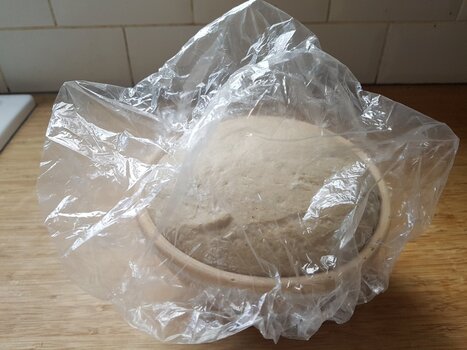
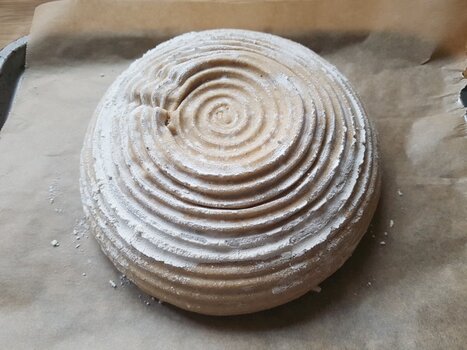
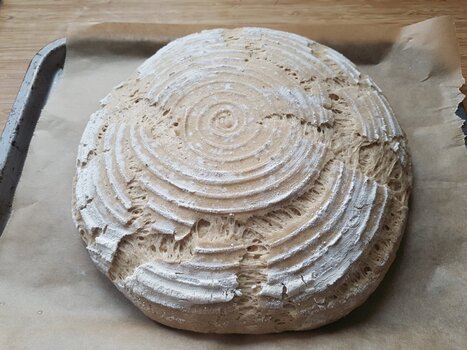

Ingredients
150g buckwheat flour
100g light spelt flour
250g strong white bread flour
1 tsp black treacle dissolved in 325 ml of warm water
9 g salt
7g instant yeast (use as per packet instructions)
Method
- Flour the banaton.
- In a large bowl mix together the three flours.
- Add salt to one side of the bowl and the yeast to the other.
- Gradually add the water mixture stirring as you go, until all the flour is picked up
- Add more of the water mixture until the dough is 'sticky' (see photo below). You may need slightly more or less than 325 ml of water.
- Now be brave! Scoop the dough out of the bowl and slap it on a dry work surface. Do not flour the surface.
- It will stick very nicely to the surface. Ignore this and pick the dough up with one hand by grabbing it on top - much as you might pick a kitten up by the scruff of its neck. Ignore the bits of dough stuck on the surface.
- Now raise your hand and throw and slap the dough back down again (be violent).
- Keep repeating this action and the dough will gradually alter in texture.
- As it becomes smoother start using the dough scraper with your other hand, to scoop up the bits stuck on the surface.
- Keep grabbing and throwing down the dough (you should now be able to start turning the top of the dough over on itself before you grab it).
- Miraculously you will end up with a nice smooth dough and a clean surface. Gently shape the dough into a ball and place the dough (seam side up) in the floured banaton.
- Cover (a shower cap is ideal) and leave to double in size.
- Turn out the dough onto a baking sheet and leave for 20 mins. It will spread slightly and should crack on top.
- Bake for approximately 25 - 30 mins until it sound hollow when tapped underneath.










Last edited:

